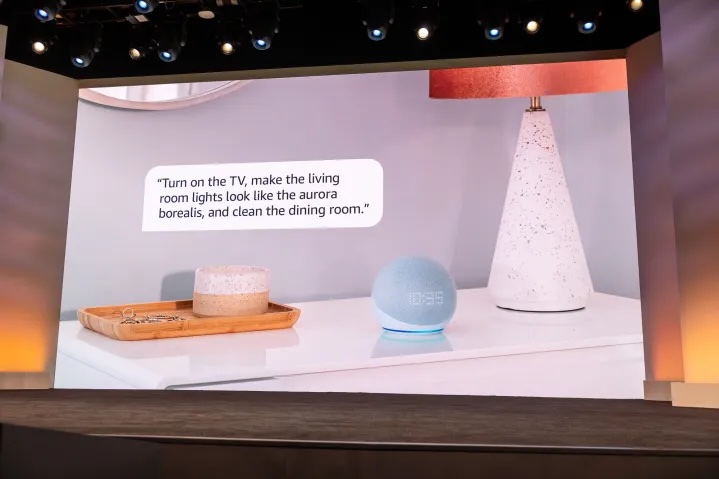
6-22 #Cheer : Samsung has reportedly decided to invest in GPUs; Royole has been declared bankrupt; Apple has allegedly suspended work on the second-generation Vision Pro; etc.

Samsung Electronics’ semiconductor chip factory in Taylor, Texas, USA, reportedly will not be operational until 2026. The company had announced its plans to invest USD17B to set up this chip factory, but it had to invest more as construction costs and other overheads have increased compared to the company’s original plans. Samsung received USD6.4B worth of benefits from the US government under the US CHIPS and Science Act. This act aims to attract major chip designers and manufacturers to set up plants in the US and grow the local semiconductor chip design and manufacturing ecosystem. Samsung reportedly decided to increase its investment to USD25B for this plant. This plant will have a chip design and chip manufacturing sections. (Android Headlines, SamMobile, MySA)

Samsung Electronics has reportedly decided to invest in GPUs. The company’s key executives, including the board of directors, have reportedly decided on this investment. It is speculated that this investment will be used to beef up its IT infrastructure for AI processing. The company’s management committee resolved the “GPU investment case” in Mar 2023. This committee consists of JH Han (Vice President and Head of Samsung DX), TM Roh (President and Head of Samsung MX), HG Park (President and Head of Management Support Office), and JB Lee (President of Samsung Memory). (TrendForce, SamMobile, Bloter, CN Beta)
TF Securities analyst Ming-Chi Kuo has indicated that Qualcomm will likely be the sole SoC supplier for the Samsung Galaxy S25 (vs. 40% for the S24), as the Exynos 2500 may not ship due to Samsung’s lower-than-expected 3nm yield. In addition to the significant increase in supply share, Qualcomm’s Snapdragon 8 Gen 4 will see a price increase of 25-30%, so that Qualcomm will benefit significantly from the increased share of S25 orders. As TSMC is the exclusive supplier of Qualcomm Snapdragon 8 Gen 4 (using the N3E), TSMC is also expected to benefit significantly from the increase in Qualcomm orders. (GizChina, My Drivers, Twitter, CN Beta)
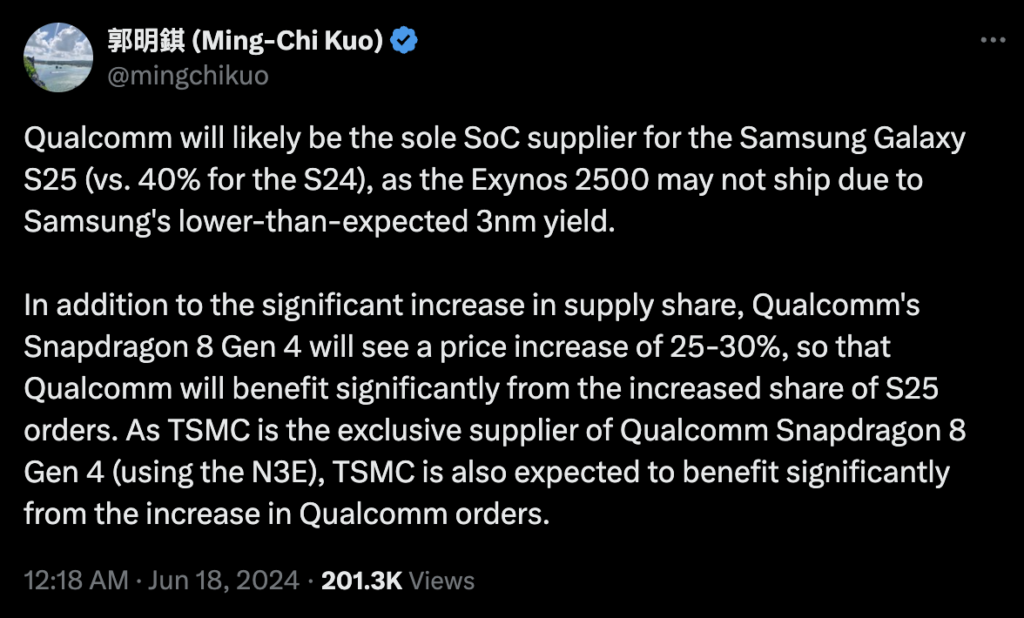

Samsung’s patent describes a clamshell foldable with an out-folding mechanism. It features a single tall display that breaks into two rectangular screens on either side when the device is folded. This design eliminates the need for a cover display on the outside of the phone. Since it does not require two separate displays, Samsung may see this design as the right approach for making foldables cheaper while still giving users everything they want from these devices. (Android Headlines, Twitter, Nerd Stash)
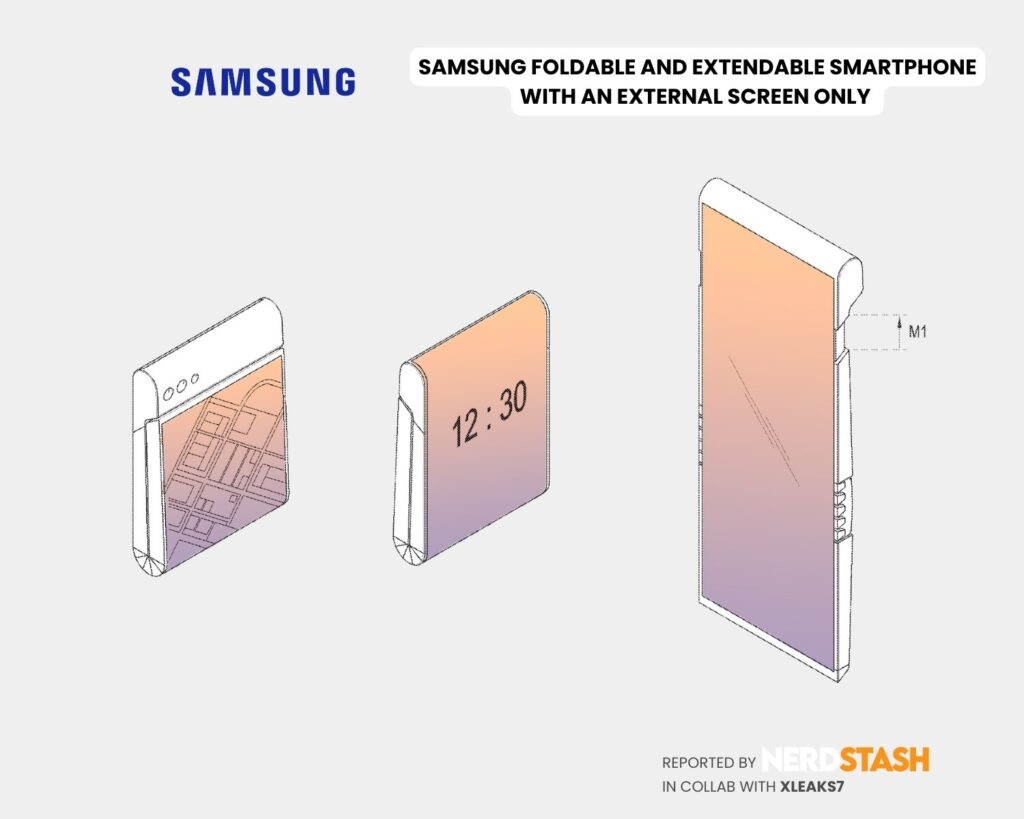
According to Display Supply Chain Consultant (DSCC), 1Q24 OLED tablet panel shipments rose 131% YoY to a new high of 1.72M and are expected to jump another 127% QoQ and 333% YoY in 2Q24 to another record high as Apple ramps OLED iPad Pro production and shipments. Apple led in 1Q24 OLED tablet panel procurement with a 47% share and is expected to widen its lead to 72% in 2Q24. 2Q24 is expected to be the peak quarter for the year on a panel procurement basis, up 127% QoQ and 333% YoY to over 3.9M OLED tablet panels. Apple’s volumes are expected to jump 246% QoQ with Huawei, Microsoft and Samsung also seeing growth. Apple’s share is expected to jump to 72% at the expense of most other brands with Huawei #2 at 13%. OLED tablets are expected to continue to gain share through 2028 and beyond as the price gap with LCDs narrow. OLED tablets are currently projected to reach a 16% unit share and 55% revenue share in 2028 as more brands offer more OLED tablets. (Android Headlines, Huawei Central, WCCFTech, DSCC)
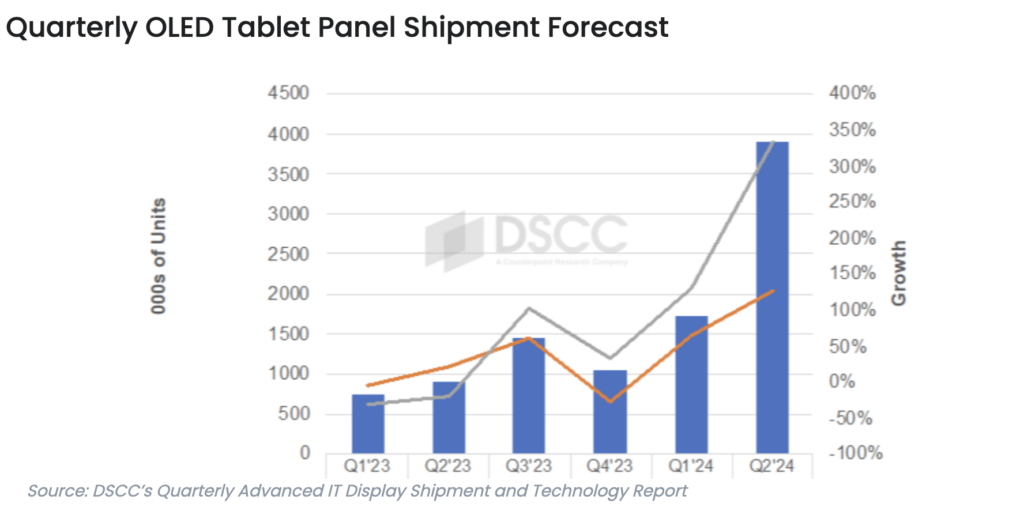
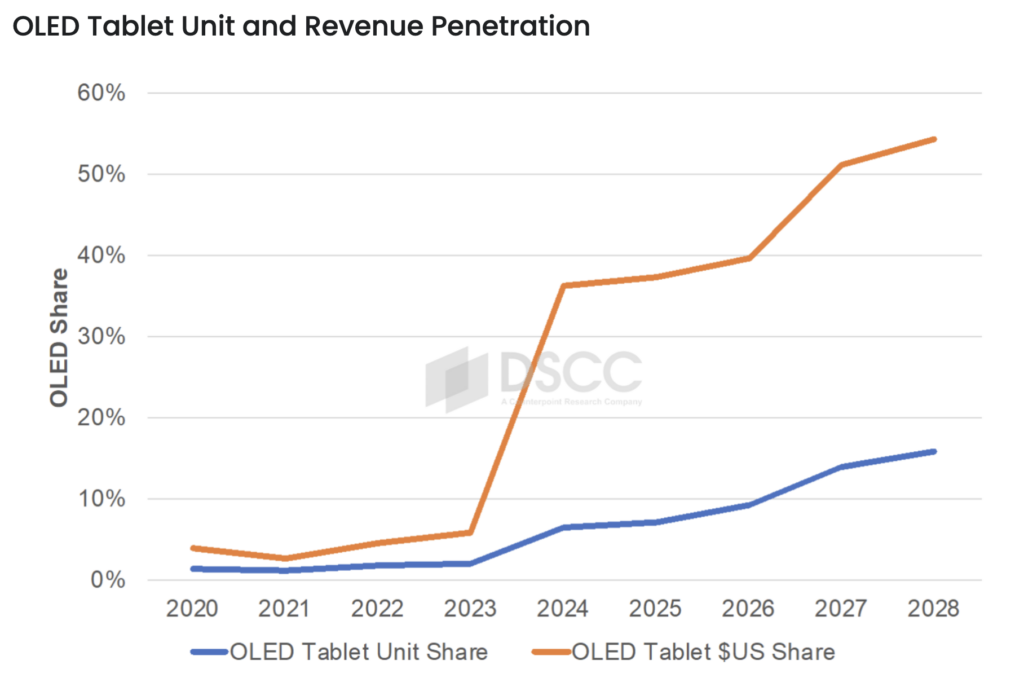
Royole, once a prominent player in the flexible display industry valued at CNY50B (about USD60B), has been declared bankrupt. The Shenzhen Intermediate People’s Court has officially accepted the bankruptcy liquidation case of Royole Technology and appointed Guangdong Huashang Law Firm as the administrator. Royole’s financial statements revealed a stark contrast between revenue and expenses, with net losses exceeding CNY3B from 2017 to mid-2020. The company failed to pay salaries to over 300 employees, accumulating a debt of CNY60M. This financial strain was one of the critical triggers for the bankruptcy filing. Royole’s attempts to go public were fraught with obstacles. Initially planning to list on the NASDAQ in 2019, the company had to withdraw due to complications.(Asia Nikkei, Caixin Global, CTOL, CN Beta)
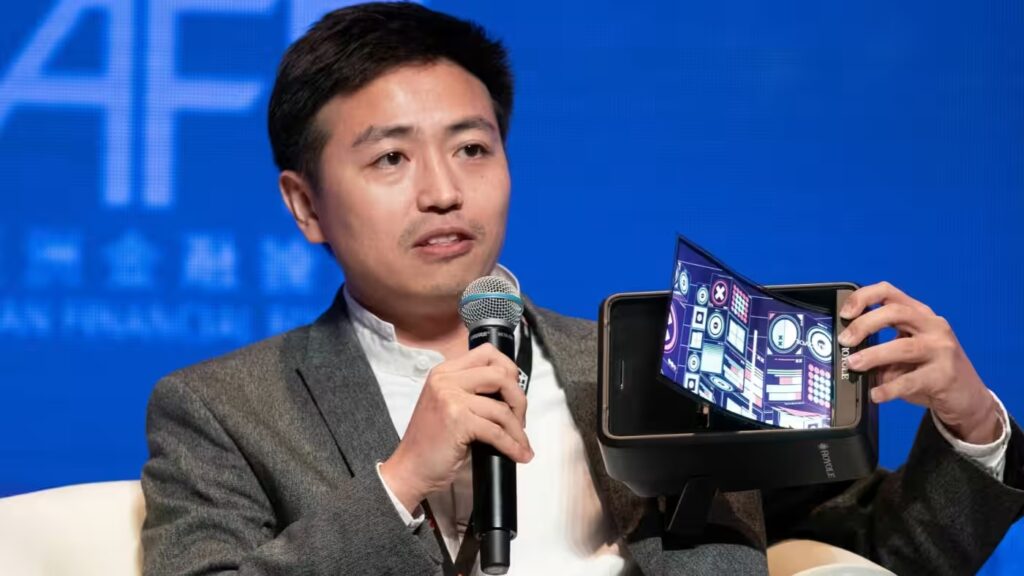

Samsung Electronics will launch three-dimensional (3D) packaging services for high-bandwidth memory (HBM) within 2024, a technology expected to be introduced for the artificial intelligence chip’s sixth-generation model HBM4 due in 2025. HBM4 will likely be embedded in Nvidia’s new Rubin GPU model expected to hit the market in 2026. In terms of the details of Samsung’s 3D packaging, it is a successor to the 2.5D method. Samsung has decided to focus on vertical integration by stacking multiple chiplets on top of each other. Samsung plans to call this the SAINT (Samsung Advanced Interconnect Technology) platform and has segregated the packaging into three types: SAINT-S, SAINT-L, and SAINT-D. They all deal with different chips, such as SRAM, Logic, and DRAM. (CN Beta, WCCFTech, TrendForce, Tom’s Hardware, KED Global)
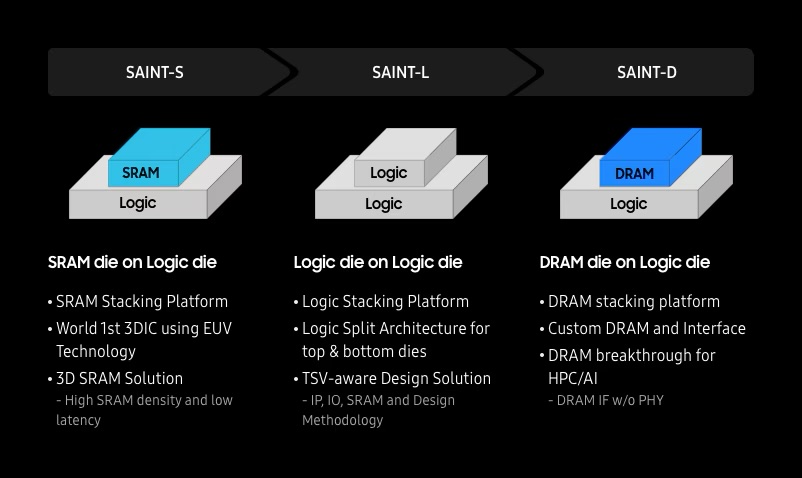

TDK Corporation successfully developed a material for CeraCharge, a next-generation solid-state battery with an energy density of 1,000Wh/L, approximately 100 times greater than the energy density of TDK’s conventional solid-state battery. TDK’s technology is aimed at a solution that can be utilized in various wearable devices, such as wireless earphones, hearing aids and even smartwatches, with the goal of replacing existing coin cell batteries. Utilizing TDK’s proprietary material technology, TDK has managed to develop a material for the new solid-state battery with a significantly higher energy density than TDK’s conventional mass-produced solid-state batteries due to the use of oxide-based solid electrolyte and lithium alloy anodes.(Phone Arena, TDK)
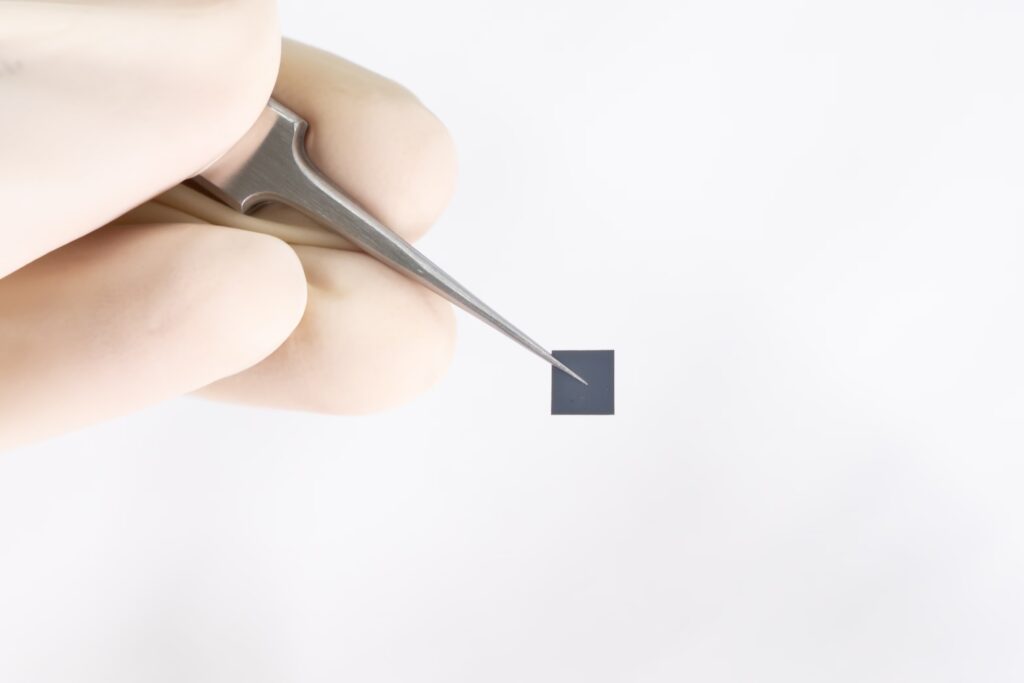
Canon has reported the development of a high-performance semiconductor material that it expects will improve the durability and mass-production stability of perovskite solar cells. The company will begin shipping samples in Jun 2024 and expects to begin mass production in 2025. Canon aims to continue development of the material and plans to collaborate with companies engaged in mass production of perovskite solar cells. The material provides a thick coating over the perovskite layer while maintaining a high rate of photoelectric conversion efficiency, which has been difficult to achieve with conventional materials. The material can be coated at a thickness of 100nm to 200nm, compared to conventional coating layers which provide a thickness of just tens of nanometers. (CN Beta, Asia Nikkei, PV Magazine, Photonics)

OnePlus claims its “Glacier Battery” will be more efficient, durable and extremely energy-dense compared to other existing solutions. The new cell will be able to provide at least 80% of its original capacity after four years of regular use, way above the industry average of 800 charging cycles. OnePlus also confirmed the 6,100mAh battery capacity in the Ace 3 Pro. The new pack will have a 763Wh/L energy density, and the the battery will weigh just 14 grams. The battery will also retain the 100W fast charging support, allowing the 6,100mAh pack to go from 1% to 100% in 36 minutes.(GSM Arena, Weibo)
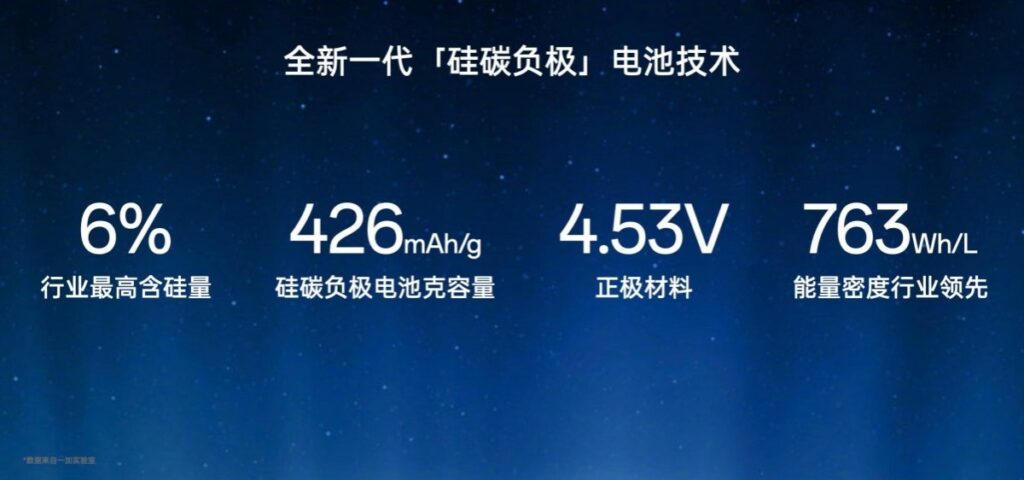
A new feature from Google dubbed “Adaptive Thermal”, which is discovered in Google’s Device Health Services application version 1.2, is designed to prevent overheating. It aims to safeguard the phone’s battery and overall performance by triggering alarms and notifications when temperatures exceed safe limits. When the battery temperature exceeds 49 degrees Celsius, Adaptive Thermal triggers a “pre-emergency” alarm. This alert notifies users that their phone is overheating and provides immediate steps to cool it down. The notification suggests avoiding direct sunlight and closing any power-consuming applications. The notification includes a “See Care Steps” button, which, when clicked, offers more detailed advice on cooling the device. (GizChina, Android Authority, Google)
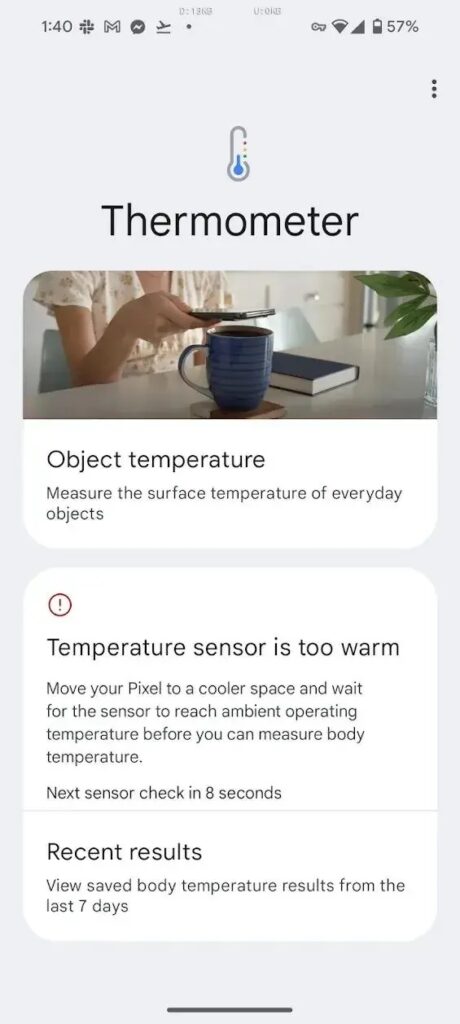

The European Union has reportedly accepted a series of concessions that Apple has made over allowing third-party rivals access to its hardware NFC systems at the core of Apple Pay. In Jan 2024, it was reported that Apple had agreed to allow rivals in the European Union to use its Near Field Communications chips in the iPhone. Originally, Apple reserved its NFC chips for its own Apple Pay services, but has been required to allow rivals access because of the EU’s Digital Markets Act. (DMA). (GSM Arena, FT, Apple Insider)

Realtek has showcased a new 5 Gbps switch platform. At the core of the new switch platform sits Realtek’s RTL9303 which is an eight port 10 Gbps switch controller. This was released a few years ago as a low cost 10 Gbps switch IC, but as it still required third party PHYs, it never really took off. The RTL9303 is built around an 800 MHz MIPS 34Kc CPU and supports up to 1 GB of DDR3 RAM as well as 64 MB of SPI NOR Flash for the firmware. When combined with Realtek’s RTL8251B 5 Gbps PHY, the end result is a comparably low-cost 5 Gbps switch. According to Ananadtech, Realtek is expecting a USD25 price per port, which is only about $10 more per port than your typical 2.5 Gbps switch today, even though some are as little as USD10 per port. When combined with a Realtek RTL8126 PCIe based 5 Gbps NIC which retails from around USD30, 5 Gbps Ethernet looks like a very sensible option in terms of price/performance. (CN Beta, CNX Software, Techpowerup, Guru3D)
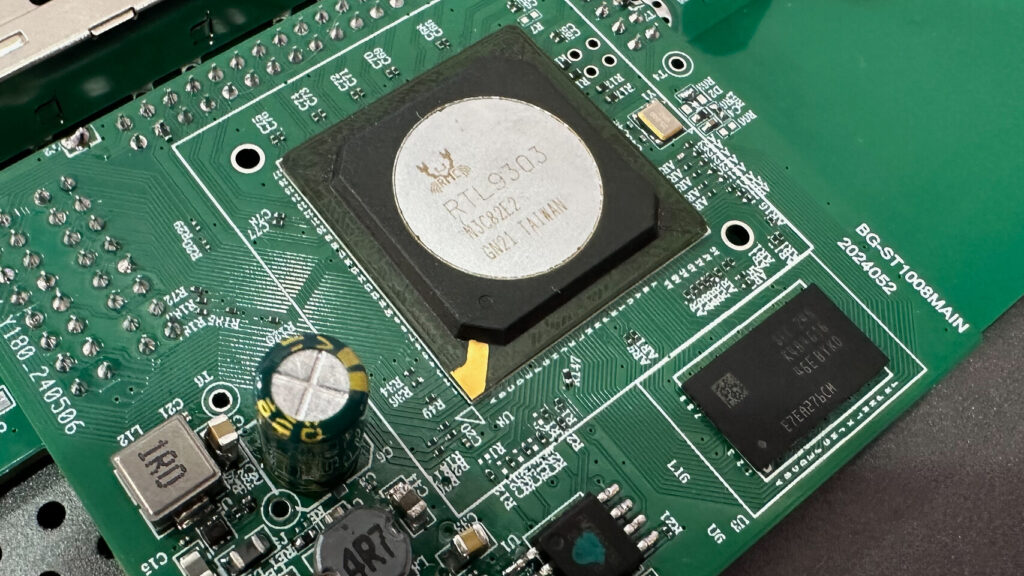
Neurotech startup Paradromics will be putting its brain implant on trial in 2025. Paradromics, which was founded in 2015, has secured USD87M in venture investment and USD18M in public funding to date. The Austin, Texas-based startup anticipates the devices will retail for about USD100,000 each. The company CEO Matt Angle is hopeful that Paradromics will have commercial approval to sell the product as soon as, but no earlier than, 2029. Currently, the company’s product is called Connexus DDI, and its competitive advantage lies in the larger number of electrodes (up to 1684), which can bring higher bandwidth and higher data transmission rate.(CN Beta, CNBC, Quartz, Sina)
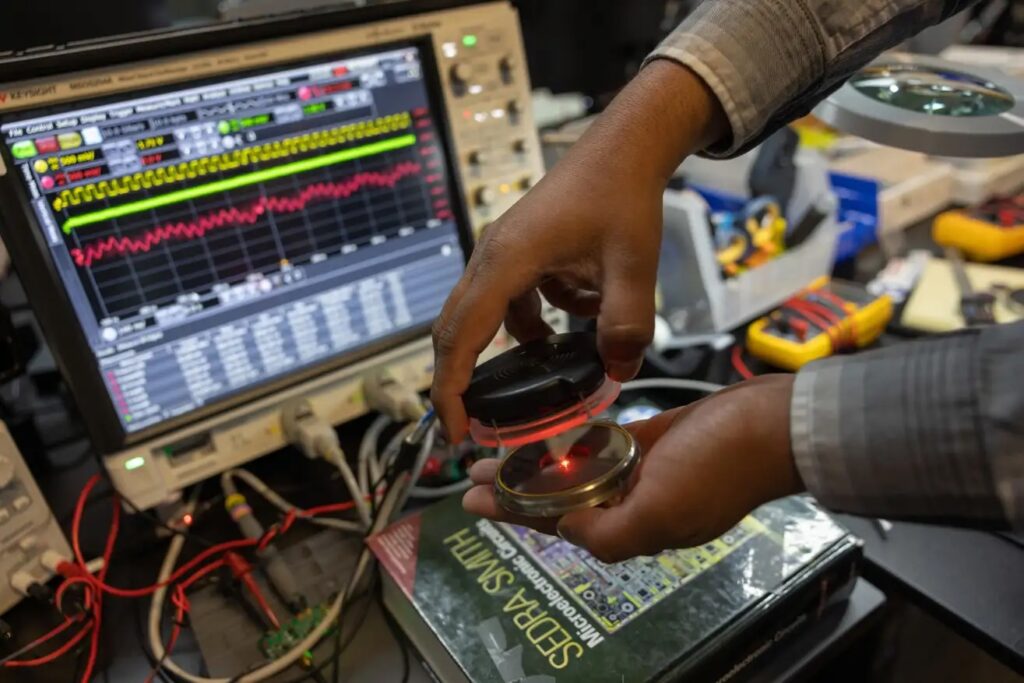

Apple said that European customers will not get access to the Apple Intelligence, iPhone Mirroring, and SharePlay Screen Sharing features that are coming to the iPhone, iPad, and Mac Sept 2024 due to regulatory issues related to the Digital Markets Act. Apple said that there will be a delay as it works to figure out how to make the new functionality compatible with the European Union’s competition rules. Apple’s warning comes as the European Commission prepares to make a ruling on whether prior changes to allow for app marketplaces meet the terms of the DMA. Regulators have said that there are “very serious” issues with Apple’s implementation, likely related to the Core Technology Fee that Apple is charging.(Apple Insider, MacRumors, FT)


Apple has allegedly suspended work on the second-generation Vision Pro headset to singularly focus on a cheaper model. Apple is still working on releasing a more affordable Vision product with fewer features before the end of 2025. The company purportedly began work on a cheaper Vision device in 2022 with the codename “N109”. The objective is to sell this model for around the same price as a high-end iPhone, which retails for up to USD1,600. At the time Apple began work on the device, it sought to release it at the end of 2024, but as of earlier 2024, it still did not have a firm prototype. The company is said to have been struggling to find ways to reduce the model’s costs without sacrificing too many features, which means that it will likely slip beyond its revised release date of the end of 2025. Apple apparently wants to retain the Vision Pro’s high-end display components in the low-cost model, which are among the most expensive components in the device. (Android Authority, The Information, MacRumors, Reuters)
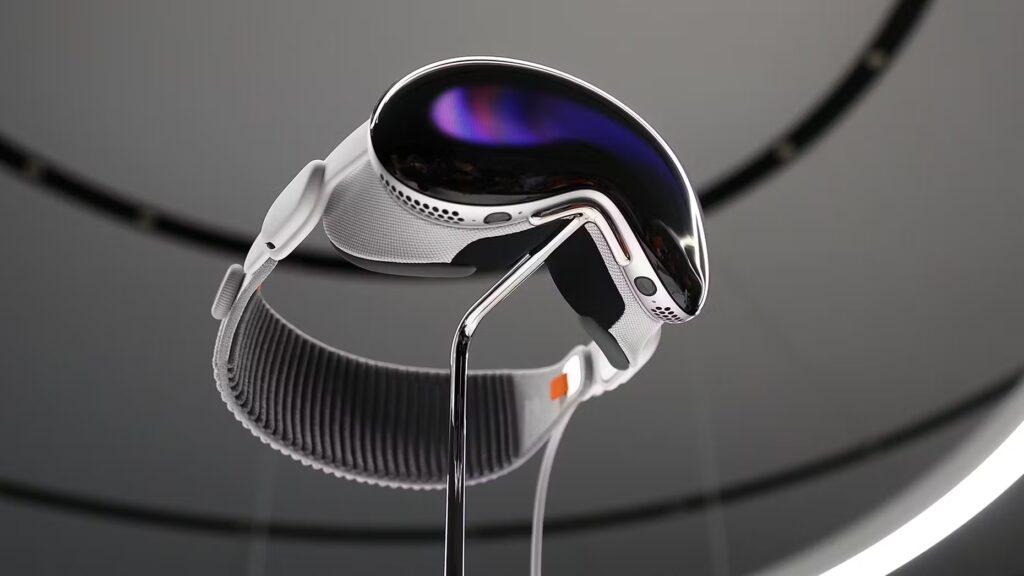

China’s securities regulator has approved autonomous driving startup Momenta’s initial public offering (IPO) in the United States. Momenta plans to issue up to 63,352,856 ordinary shares and list on the Nasdaq Stock Market or the New York Stock Exchange. The auto industry has defined five levels of autonomous driving, spanning driver assistance features such as cruise control at level one to fully self-driving cars at level five. China issued the guideline of the nationwide scheme in Nov 2023 to start accepting applications from companies that seek to roll out more fully autonomous driving vehicles for mass adoption. (CN Beta, Reuters, US News)
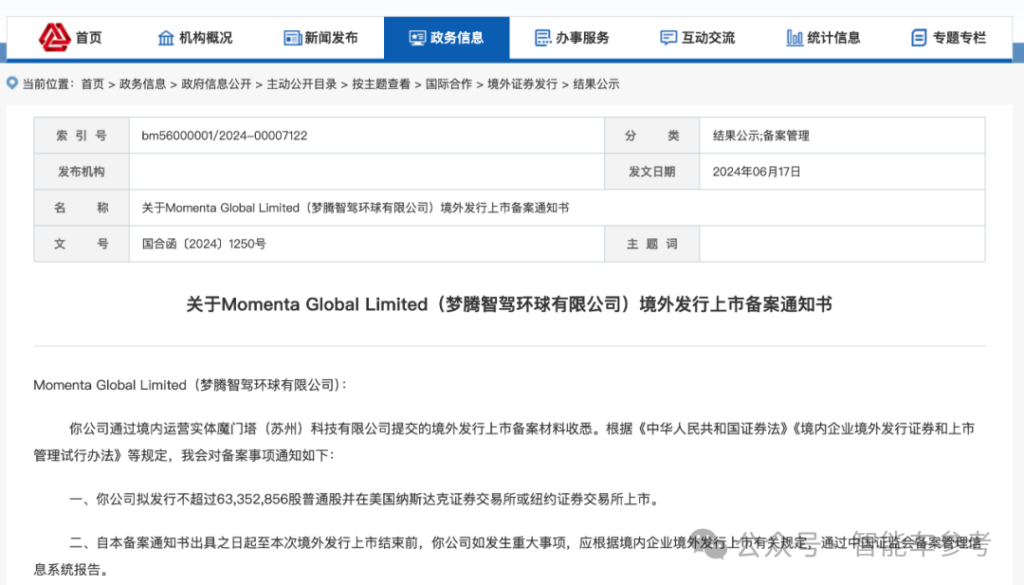
Tesla’s hefty downsizing since 2023 has reduced its global head count to just over 121,000 people, including temporary workers, internal records suggest, indicating that the automaker has slashed more than 14% of its workforce so far in 2024. Tesla CEO Elon Musk has sent an email to “everybody”. He told employees, “Over the next few weeks, Tesla will be doing a comprehensive review to provide stock options grants for exceptional performance”. He added that options grants will also be awarded to “anyone who does something outstanding for the company”. (CN Beta, CNBC, NBC News, Reuters)
Fisker has filed for bankruptcy protection, as the U.S. electric-vehicle maker looks to salvage its operations by selling assets and restructuring its debt after burning through cash in an attempt to ramp up production of its Ocean SUVs. The company estimated assets of USD500M to USD1B and liabilities of between USD100M and USD500M, according to the filing. The hyper-competitive EV market has seen several companies, including Proterra, Lordstown and Electric Last Mile Solutions, file for bankruptcy in the past 2 years as they grappled with weakening demand, fundraising hurdles and operational challenges from global supply chain issues. (TechCrunch, Forbes, Motor Trends, Reuters)
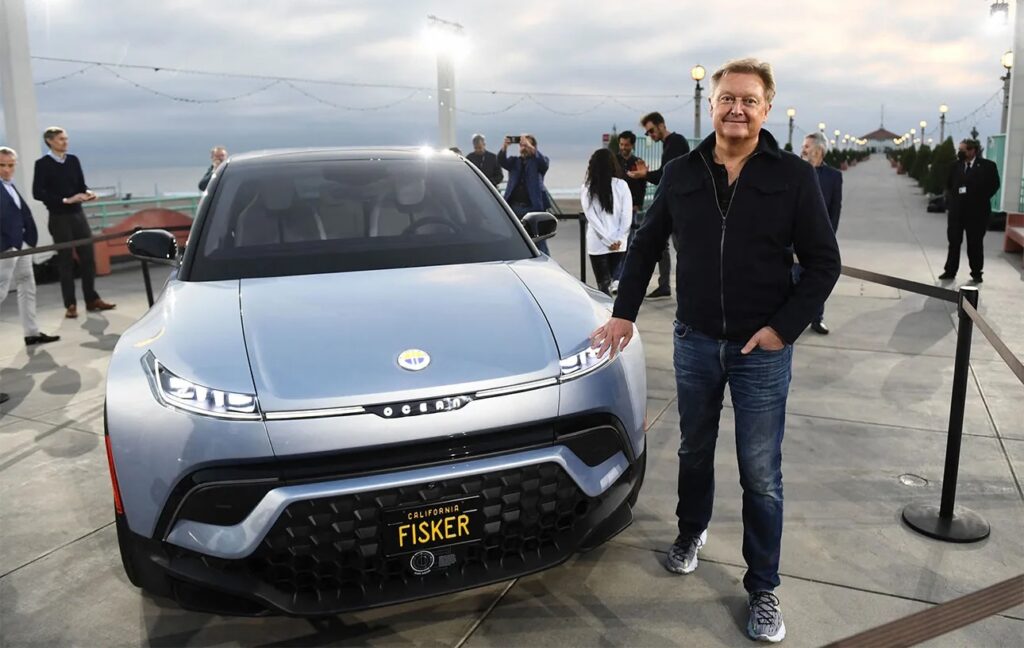

Samsung Electronics reportedly plans to incorporate on-device artificial intelligence (AI) into its appliances starting 2025. Following the launch of its first AI smartphone, the Galaxy S24 earlier 2024, Samsung aims to rapidly dominate the “hyper-connected ecosystem” spanning both appliances and smartphones, positioning itself strongly against Apple in the AI competition. Samsung Electronics’ Home Appliance division is developing products targeting a 2025 release of appliances integrated with large language models (LLMs) on-device. This marks the first time Samsung has concretized plans to equip its appliances with on-device AI. The initial products to incorporate this technology will include the Family Hub refrigerator and other appliances such as washing machines and induction cooktops from Samsung’s Bespoke AI line, which features LCD screens. (Mashable, Twitter, Unwire.hk, MK, Business Korea)
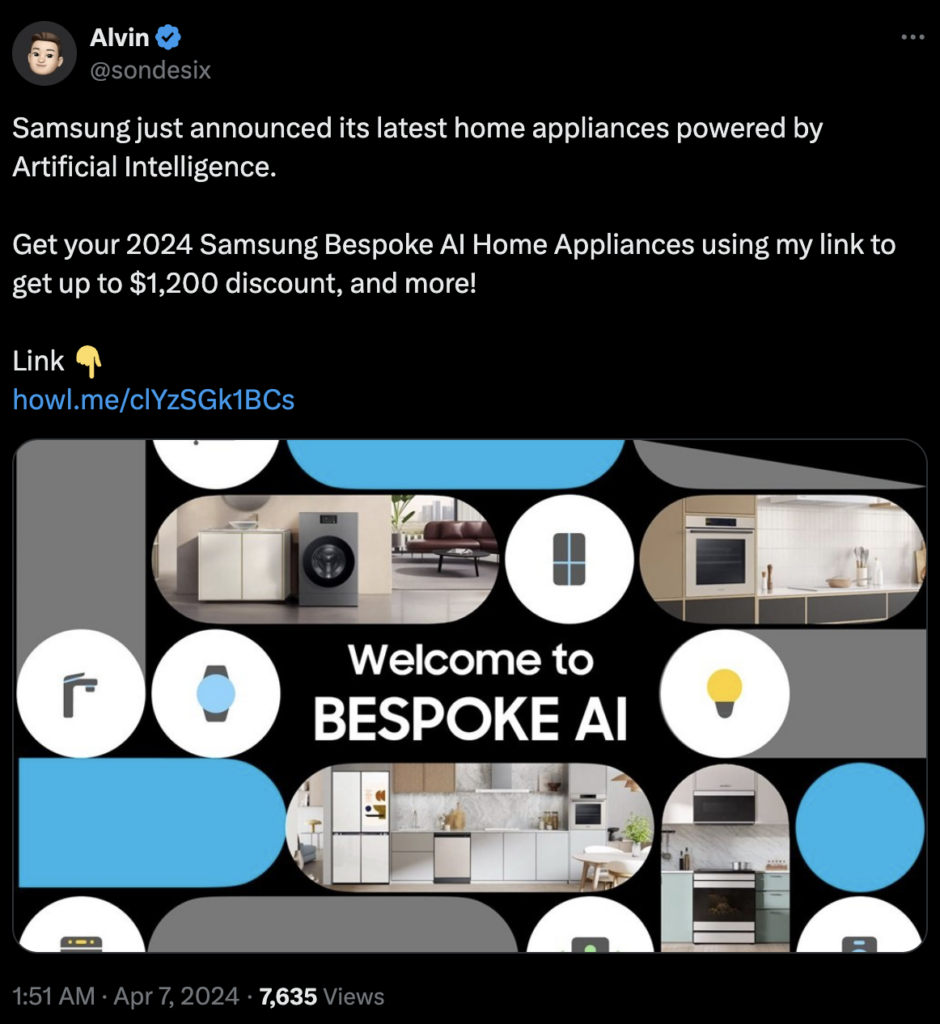

TikTok has revealed its plan to launch a newly generative AI feature called “digital avatar” for businesses. This feature will help businesses create and promote branded content more easily. The digital avatar is based on real people and is part of TikTok’s effort to improve social media campaigns. The generative AI-powered avatars are made exclusively for brands and businesses. The goal of it is to help the creators and brands promote their products and services more easily. The tech giant states that “AI personas are intended to assist creators and businesses in developing branded content. The generative AI will aid them in generating human-like promotions in a shorter timeframe”. (Android Headlines, The Information)

Amazon is allegedly planning a major revamp of its Alexa service to include a conversational generative AI with two tiers of service and has considered a monthly fee of around USD5 to access the superior version. Known internally as “Banyan”, a reference to the sprawling ficus trees, the project would represent the first major overhaul of the voice assistant since it was introduced in 2014 along with the Echo line of speakers. Amazon has dubbed the new voice assistant “Remarkable Alexa”. The company’s plans for Alexa including pricing and release dates could be altered or cancelled depending on the progress of Project Banyan. (Digital Trends, Reuters)
